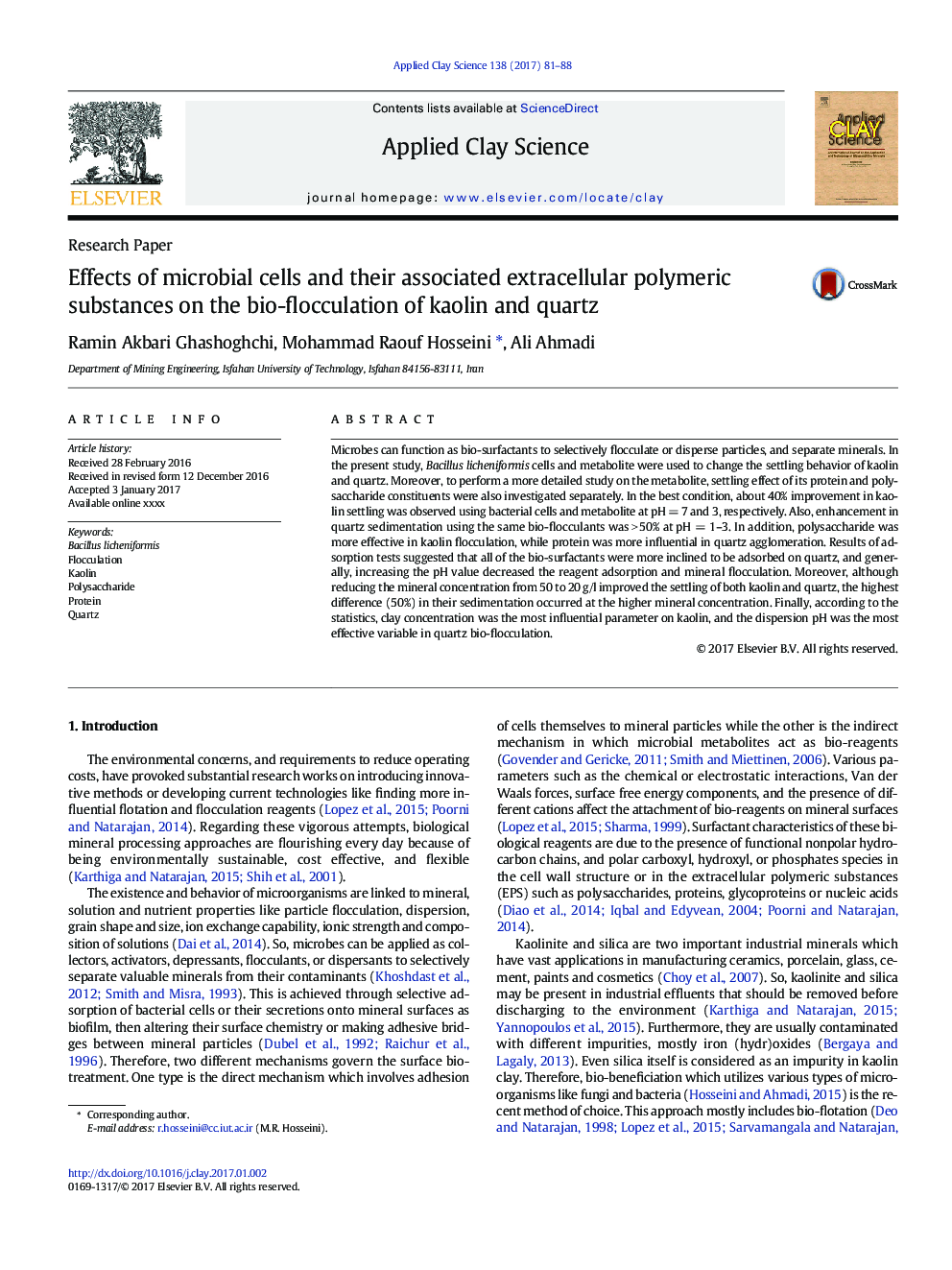| Article ID | Journal | Published Year | Pages | File Type |
|---|---|---|---|---|
| 5469066 | Applied Clay Science | 2017 | 8 Pages |
Abstract
Microbes can function as bio-surfactants to selectively flocculate or disperse particles, and separate minerals. In the present study, Bacillus licheniformis cells and metabolite were used to change the settling behavior of kaolin and quartz. Moreover, to perform a more detailed study on the metabolite, settling effect of its protein and polysaccharide constituents were also investigated separately. In the best condition, about 40% improvement in kaolin settling was observed using bacterial cells and metabolite at pHÂ =Â 7 and 3, respectively. Also, enhancement in quartz sedimentation using the same bio-flocculants was >Â 50% at pHÂ =Â 1-3. In addition, polysaccharide was more effective in kaolin flocculation, while protein was more influential in quartz agglomeration. Results of adsorption tests suggested that all of the bio-surfactants were more inclined to be adsorbed on quartz, and generally, increasing the pH value decreased the reagent adsorption and mineral flocculation. Moreover, although reducing the mineral concentration from 50 to 20Â g/l improved the settling of both kaolin and quartz, the highest difference (50%) in their sedimentation occurred at the higher mineral concentration. Finally, according to the statistics, clay concentration was the most influential parameter on kaolin, and the dispersion pH was the most effective variable in quartz bio-flocculation.
Related Topics
Physical Sciences and Engineering
Earth and Planetary Sciences
Geochemistry and Petrology
Authors
Ramin Akbari Ghashoghchi, Mohammad Raouf Hosseini, Ali Ahmadi,
